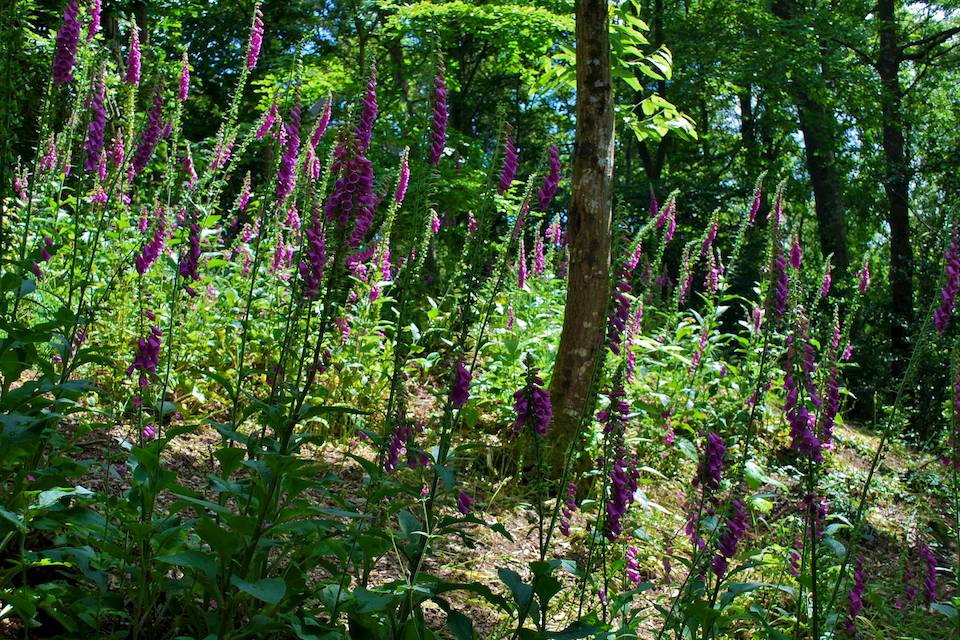Just beyond the vibrant Greenhouse borders stand our nemeses; two enormous Leylandii. Initially planted over fifty years ago as a quick fix replacing demised Yew trees, they’re now as dear to us as Asbestos. Screening they certainly provide and evergreen they may be, but it’s their incessant desiccating of all that’s good in the soil, that creates such problems, especially for the few audacious plants around and underneath them, struggling to survive.
Leylandii tend to compete directly with plants for water, nutrients and oxygen. Their roots, capable of spreading to around 10-15m, are situated within the first sixty cm layer of the soil. This will vary depending on soil type, as on clay soils, such as ours the roots may sit even higher, in the top thirty cm layer. Within a 10-15m radius therefore, Leylandii leave nothing but dry dusty soil, void of moisture and nutrients. As an additional bonus, their dense, Evergreen, canopy deprives anything growing below from much needed sunlight.
‘Off with their heads’, is probably the best policy, further confirmed by Anne Wareham’s recent eminent article on liberating the garden of underwhelming plants. Though, expulsion is not without complications. Removal would mean opening the walled garden to the elements, and leave a colossal void that would take several decades to fill. There is a discussion ongoing regarding the possibility of removing one at least, though that is still undecided. For the time being therefore, we continue to attempt on improving the area under and surrounding the trees, to somehow fit in with the rest of the garden.
Planting in dry shade conditions is superbly challenging and sadly copious plants have reluctantly been condemned to a premature death. Few seem tough enough, but there are some exceptions such as Comfrey, Vinca, Lily of the Valley, Geranium, Melissa Officinalis and Cyclamen. All therefore eagerly encouraged. Ground elder too, normally removed with frantic vigour elsewhere, seems to find this area hospitable and therefore lives here without threat of persecution. Rampant the plants are not, but survive they do. Just to clarify, survival in this area is defined as ‘going solo, au naturel’. No fancy underground irrigation systems, frequent watering or soil improving schedules are relevant here.
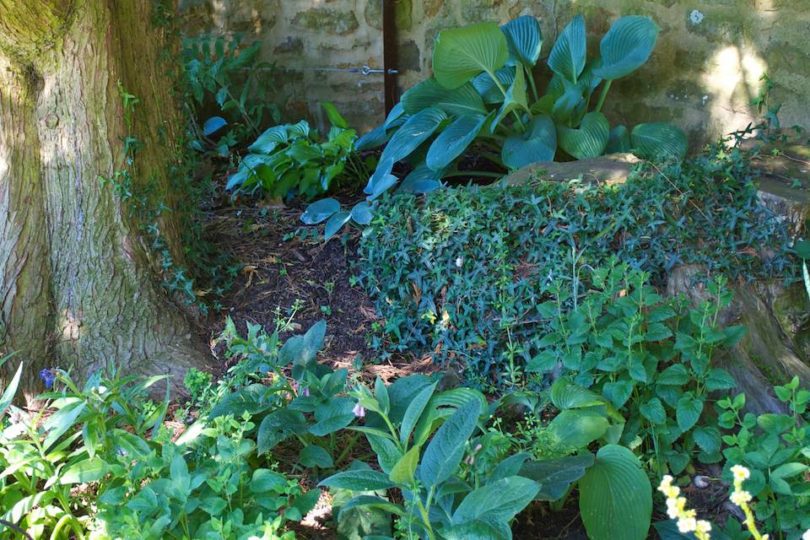
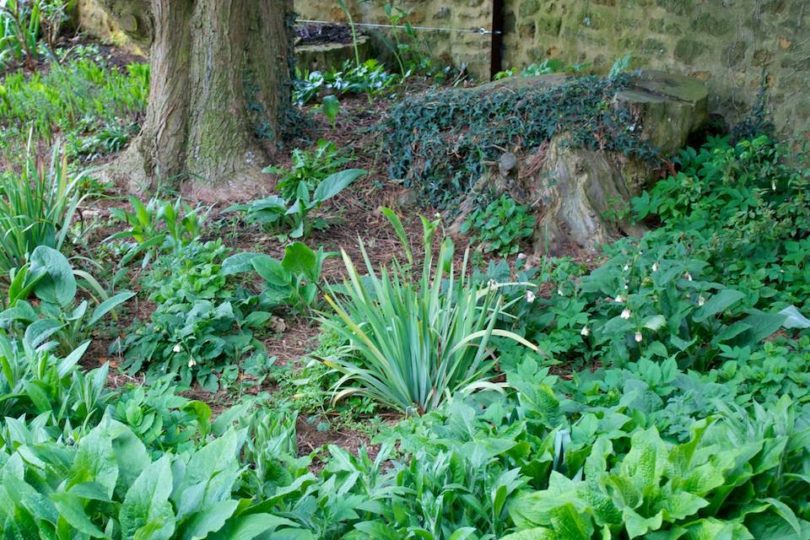
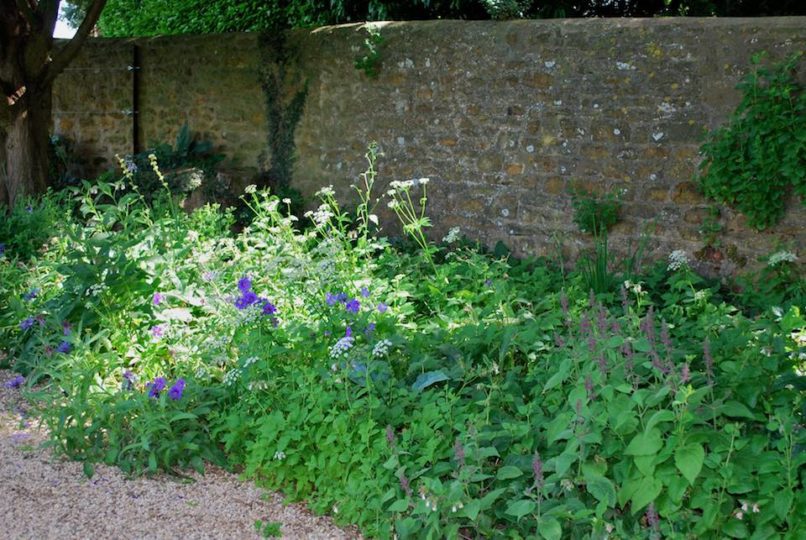

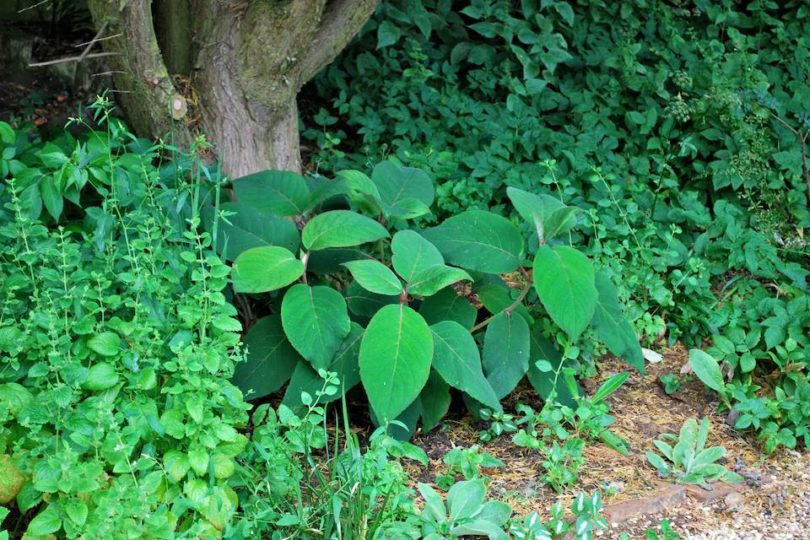

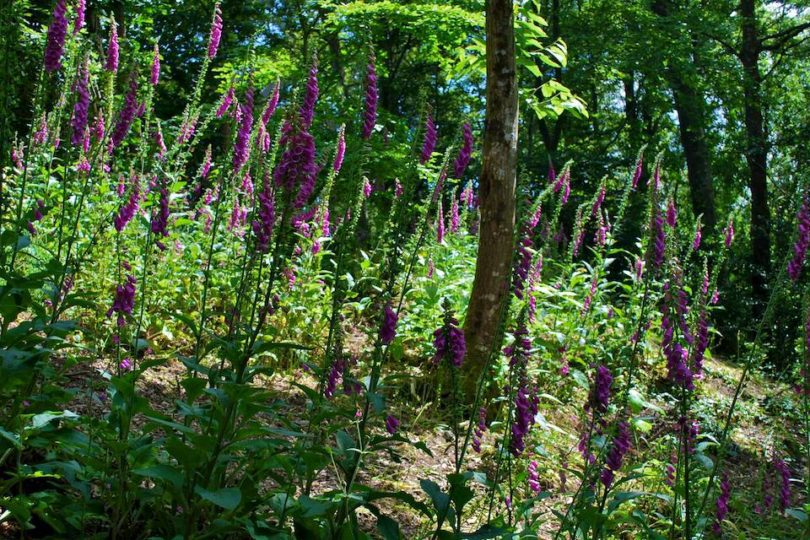
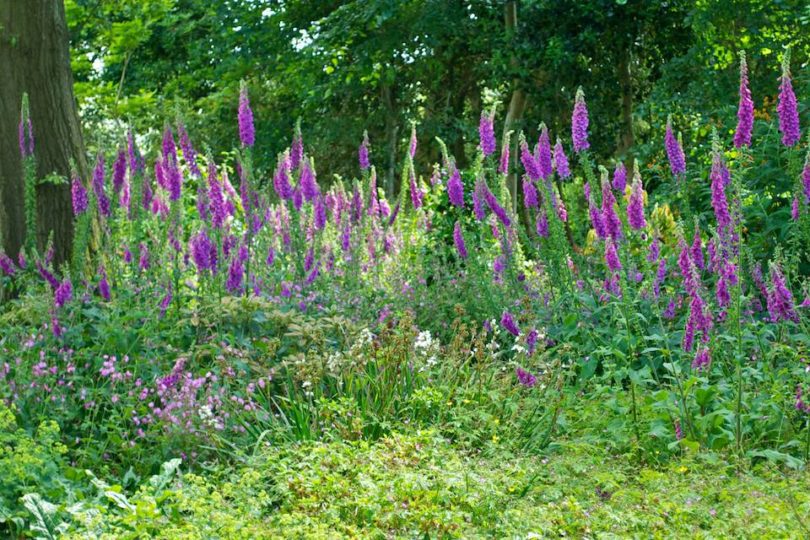
All shade is not equal
Behold, Graham Rice’s, ‘Planting the Dry Shade Garden’. Rice, a known plantsman and award winning writer, adorned with a multitude of horticultural degrees, certainly has all the credentials to provide the much sought after solutions to our dry shade planting problems. His book is clearly laid out, starting with detailed guidance on coping with the problem, which subsequently leads into a meticulous list of plants suited to dry shade. Although, a quick peek in the index, revealed no mention of Leylandii, nor its parents the Monterey or Alaskan Cypress, which is somewhat disconcerting. I was hoping to find them lavishly exposed in a would-be section called, objectionable trees.
Shade
Rice shares a remarkably valuable lesson, in that not all shade is equal. This may seem like an obvious statement, but is often overlooked. Shade comes in various guises, from permanent shade cast from structural barriers, such as walls, fences and overhanging roofs, to the dappled variety where (limited) sunlight is able to permeate. Further factors such as exposure orientation need to be considered, as an east or west facing wall may be overshadowed for the first part of the day, but still be in good light for the rest. In addition, seasonal changes in light, may exacerbate this further.
True to form, evergreen trees cast shade all year round. Though according to Rice, there will be some variation by season. He explains, that leaf cover denseness and natural tree habit will determine the level of shade cast and moisture extracted from the soil. The shade casting abilities of deciduous trees, unsurprisingly varies according to species. Rice provides a constructive catalog of deciduous trees according to shade casting density, and whether early or late-leafing. Useful information for making considered selection decisions on the purchase of a tree and its impact on the garden.
Dry Shade
Dry shade is the result, not just of normal moisture evaporation from the soil, and moisture taken up by tree roots, but also the result of rain failing to penetrate the tree canopy. Rice refers to this as rain shadow, where depending on prevailing wind, rain may be deflected by the tree, or other barriers such as walls or overhang. According to Rice, ‘Moisture evaporates off the foliage of dense canopies and may also run back down the branches, soaking in at the base of the tree and leaving little moisture in the soil’. Moisture uptake by trees, will vary according to the season, where in spring more moisture is required to quench the thirst of spring growth. Evergreens though, explains Rice, ‘Tend to follow a less clear-cut version of the same pattern’. Presumably, this means that Evergreens require a more constant supply of moisture, so blatantly demonstrated by the parched soil under and around our Leylandii.
Mary, Mary, Quite Contrary
Rice’s teachings certainly enable increased understanding, crucial to pursue the right course of action for dry shade conditions. I for one, look at that patch with more enthusiasm and optimism than ever before. However, the book then takes a rather strange turn discussing methods to altogether eradicating the source of the shade and aridness, including brazenly chopping down the tree and the installment of water irrigation systems. This may seem a perfectly logical course of action, but this book is entitled ‘Planting the Dry Shade Garden’. Surely if one eliminated the source of the shade and moisture deprivation, why bother with dry shade planting at all, especially in light of its limited palette of plants?
To be fair, Rice offers more than simply cutting down the tree. Methods such as crown thinning and lifting, are suggested which will increase sunlight permeation. Unfortunately, neither of these methods are described in great detail, as Rice advises professional involvement. Books such as ‘The Art of Creative Pruning’ by Jake Hobson, provide detailed explanations, if you wish to have a go yourself. Furthermore, Rice advises improving the soil through mulching, favouring composted pine bark and shredded leaves. In terms of further soil improvement, Rice advises to raise the soil level, by using what he refers as ‘attractive’ raised beds made from logs, bricks or blocks. Apart from not being a fan of these types of constructions, raising soil levels is not always possible. As is the case in our garden where the dry patch runs alongside a path and extensive lawn.
Plant Selection
According to Rice, the main characteristics to look out for in plants suited to dry shade are those that (1) lose limited moisture through leaves, (2) can store water in rhizomes, tubers or stems, (3) are Evergreen, (4) start their annual life cycle early to store sufficient light and finally (5) are adapted to low light conditions.
Rice has outlined detailed descriptions of an impressive array of plants (130+), providing both background information, but also valuable practical details such as (a.o) resilience, suitability according to level of shade, sizing, flowering and recommended cultivars. Admittedly, the plant overview does make depressing reading, as many are rather unattractive. Personally speaking plants such as Aucuba japonica Arum, Carex, Mahonia Aquifolium etc., are better suited to Madame Tussauds, than a garden. Though on closer inspection, there are ‘softer’ plants included such as Brunnera Macrophylla, Galium Odoratum, Hellebores, Epimedium, Geranium, Lamium, and Rubus, that may very well find a new home.
Hostas should certainly be part of one’s dry shade arsenal. According to Rice the green leaved forms are most likely to succeed, followed by the blue-leaved varieties. Interestingly, the opposite is true in our garden, where the blue leaved, such as Halcyon, Haspen- Blue and the majestic Prince of Wales (Hosta that is) have outlived their green and variegated cousins. Experimental purchases such as the beautiful Hosta War Paint, and Hosta Praying Hands sadly resulted in imminent disaster. Not completely ruthless, establishing plants are well watered, but sadly even that was not enough to keep these lovely specimens alive.
Foxgloves are the personal favourite amongst the plants listed in Rice’s impressive plant directory. Success in our dry shade patch has to date been lacking, but according to Rice sowing in early spring in a sunny spot, subsequently transplanting to their final dry shade location in autumn, should be more successful. From seeing them grow in the shady woodland areas in Cornwall gardens, I did notice they tended to grow where sunlight was able to permeate through the trees, so planting in the ‘lighter’ areas will probably be our course of action.
Inspired by Broughton Grange, there’s one other plant, that seems to survive in our dry shade patch, though many run in fear due to its rather invasive nature. Despite a slow start, Allium Ursinum, known to many as Wild Garlic, seems to survive. The nursery did not actually want to sell me the bulbs, and Sarah Raven too sternly advised me against planting as they can be rampant, but every spring I can’t help but be delighted to see the green tufts appear in that ruthlessly dry soil. I wonder if Rice would ever be inclined to add this one to his list?
